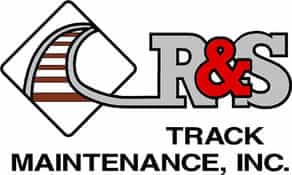
The Importance of Compliance and Safety Standards in Railroad Contracting
Did you know that over 80% of railroad accidents could be prevented by adhering to strict safety and compliance standards? As a railroad contractor, understanding and implementing these standards is crucial. Not only does this practice safeguard the lives of workers and passengers, but it also ensures the longevity and reliability of the railway infrastructure. This article dives into the importance of compliance and safety standards in railroad contracting, providing you with valuable insights and actionable advice to uphold these essential practices.
Why Compliance and Safety Standards Matter
Compliance and safety standards are the backbone of the railroad industry. These standards are designed to:
- Prevent accidents and injuries
- Ensure operational efficiency
- Maintain infrastructure integrity
- Protect the environment
For a railroad contractor like R&S Track, adhering to these standards is not just about following regulations; it’s about committing to excellence and responsibility.
Key Compliance Standards in Railroad Contracting
Federal Railroad Administration (FRA) Regulations
The FRA sets comprehensive regulations that every railroad contractor must follow. These regulations cover:
- Track Safety Standards
- Operating Practices
- Signal and Train Control
- Hazardous Materials Handling
Compliance with FRA regulations is non-negotiable. Regular audits and inspections ensure that contractors like R&S Track adhere to these guidelines, minimizing risks and enhancing safety.
Occupational Safety and Health Administration (OSHA) Standards
OSHA standards are designed to protect the workforce. Key areas of focus include:
- Worker Training and Certification
- Protective Equipment
- Hazard Communication
- Emergency Response
By meeting OSHA standards, R&S Track ensures a safe working environment, reducing the likelihood of workplace accidents and fostering a culture of safety.
The Role of Safety Management Systems (SMS)
A Safety Management System (SMS) is a systematic approach to managing safety, including necessary organizational structures, accountabilities, policies, and procedures. An effective SMS for a railroad contractor includes:
- Risk Assessment and Management
- Safety Assurance
- Safety Promotion and Training
- Continuous Improvement
Implementing an SMS helps contractors like R&S Track to proactively identify and mitigate risks, ensuring compliance with safety standards and enhancing overall safety performance.
Actionable Steps for Ensuring Compliance and Safety
Conduct Regular Training Programs
Regular training ensures that all employees are up-to-date with the latest safety protocols and compliance requirements. Topics should include:
- Emergency Procedures
- Equipment Handling
- Hazard Identification
Perform Routine Inspections
Routine inspections are vital to maintaining compliance and safety. Focus areas should include:
- Track Conditions
- Equipment Functionality
- Environmental Hazards
Foster a Safety-First Culture
Creating a culture that prioritizes safety can significantly reduce accidents and enhance compliance. Encourage:
- Open Communication
- Reporting of Hazards
- Continuous Learning
Upholding Excellence in Railroad Contracting
Compliance and safety standards are indispensable in the railroad industry. For R&S Track, adhering to these standards is a testament to our commitment to safety, quality, and reliability. By following FRA and OSHA regulations, implementing a robust SMS, and fostering a safety-first culture, contractors can ensure the highest levels of safety and compliance.
For more information on how we can assist you with your railroad contracting needs, ensuring the highest standards of safety and compliance, give us a call today.



